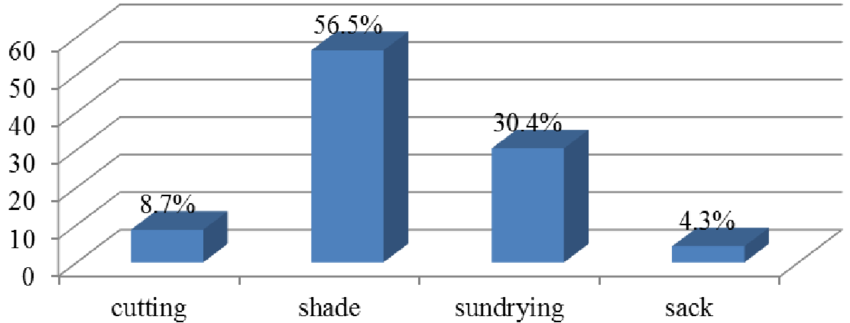W.B.C.S. Examination Notes On – Conservation Of Fodder – Animal Husbandry And Veterinary Science.
WBCS পরীক্ষার নোট – পশুর সংরক্ষণ – পশুপালন ও পশু চিকিৎসা বিজ্ঞান।
Fodder conservation
Fodder is usually conserved as hay or silage. Some forage crops can either be grown exclusively for hay, or silage production or grazed before being set aside for fodder conservation.Continue Reading W.B.C.S. Examination Notes On – Conservation Of Fodder – Animal Husbandry And Veterinary Science.
Fodder conservation is an important tool for evening out peaks and troughs in feed supply in a grazing enterprise. Forage crops can play an important role in providing fodder that can be conserved for later use.
The process
The fodder conservation process commences with the cutting of the crop. The timing of the cutting influences the potential quality or feed value of the hay or silage.
The crop should be at a phase in the growth cycle where vegetative growth and plant sugars are at or near their peak. This will ensure that important feed attributes such as protein, digestible energy, dry matter percentage and digestibility are at their highest potential at the beginning of the conservation process.
Everything that follows is aimed at maintaining and preserving the feed value.
Hay
Hay production is the most common fodder conservation practice. Most crops and pastures can be made into hay of varying quality. However, all successful hay making relies on wilting the cut pasture to a moisture or dry matter level where it is dry enough not to ferment, but wet enough not to shatter when baled. This is usually at about 12-14% dry matter but varies according to bale size and shape.
If hay is baled with too much moisture it can ferment leading to heat generation, feed quality decline and a potential fire risk.
Rain presents one of the greatest challenges in making hay. Rain delays wilting, leaches nutrients from the cut forage and makes achieving satisfactory moisture levels difficult. Silage can be easier to manage if rain is expected as the ensiling process is undertaken at higher moisture levels and therefore less drying time is required.
Silage
Silage is made by ensiling or fermenting forage crops or pasture and generally produces better quality feed than hay. This is due to the reduced interval between cutting and conserving the feed when making silage – the longer the interval, the more the feed nutrients degrade.
As with hay, forage crops should be cut for silage at their most vegetative stage with no more than 20% of seed heads showing. This is then wilted to about 30% dry matter before being chopped and ensiled in an airtight environment such as a pit or wrapped in plastic.
The production and storage of silage relies on an anaerobic or air-free environment. This promotes the desired fermentation processes and inhibits undesirable processes and decay. It is critical that an air-free environment be maintained from the time the silage is made until it is fed out.
Vendor declarations, withholding periods and grazing intervals
If fodder is being produced for sale, a fodder vendor declaration or commodity vendor declaration (CVD) should be completed and accompany the hay when sold.
Producers must ensure that all withholding periods (WHP) and export grazing intervals (EGI) are observed when grazing forage crops that have been treated with chemicals.
Our own publications are available at our webstore (click here).
For Guidance of WBCS (Exe.) Etc. Preliminary , Main Exam and Interview, Study Mat, Mock Test, Guided by WBCS Gr A Officers , Online and Classroom, Call 9674493673, or mail us at – mailus@wbcsmadeeasy.in
Visit our you tube channel WBCSMadeEasy™ You tube Channel
Please subscribe here to get all future updates on this post/page/category/website



 Toll Free 1800 572 9282
Toll Free 1800 572 9282  mailus@wbcsmadeeasy.in
mailus@wbcsmadeeasy.in


















































































































